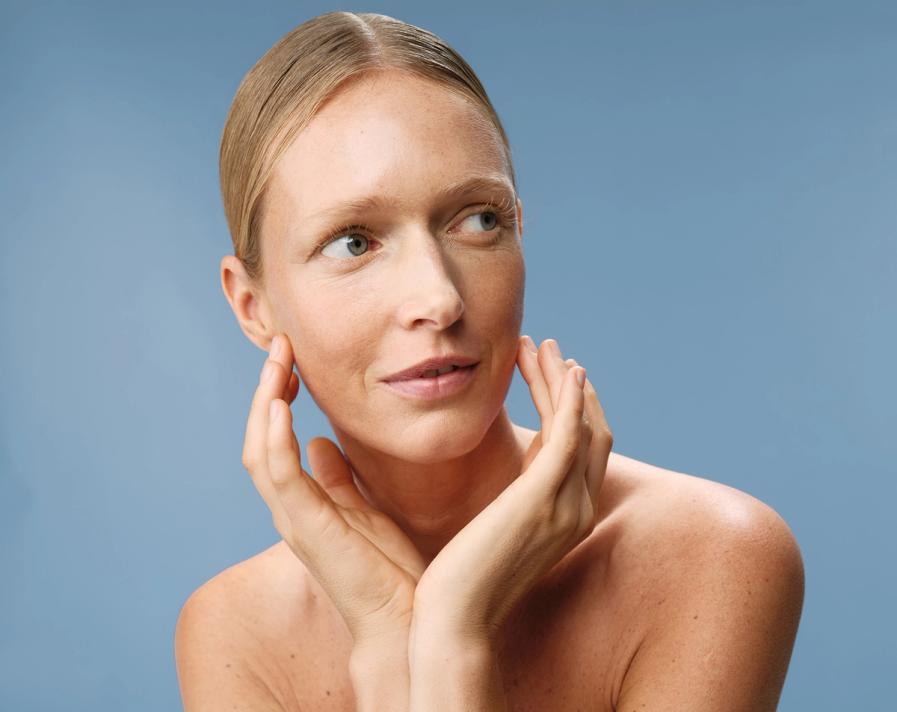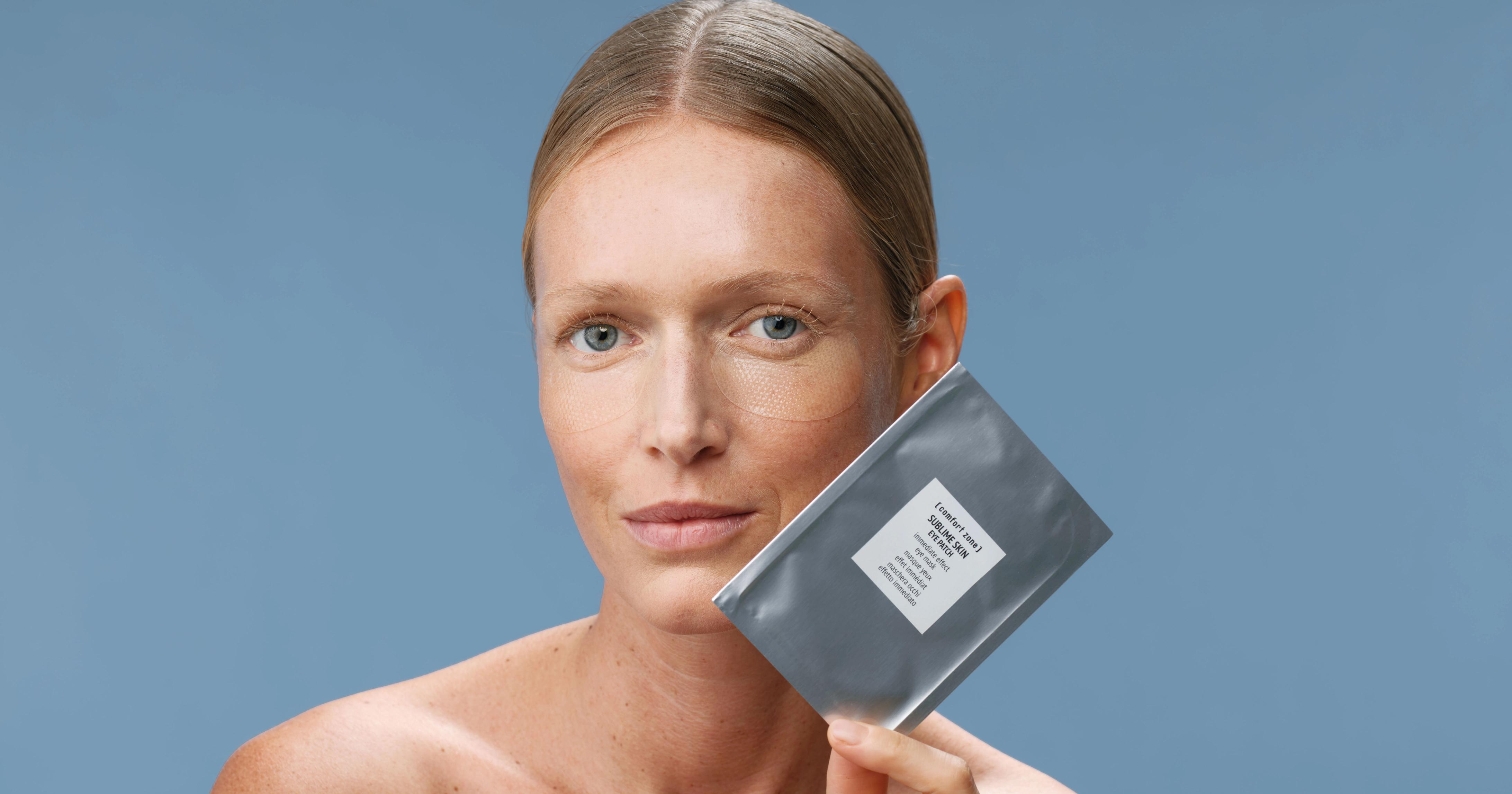Sublime Skin Eye Cream
Smoothing eye contour cream
skin care
Maria Giulia Simonazzi | International Training Manager
8 min read

As the skincare industry continues to grow and attract more interest, some may question the necessity of certain products. While moisturizers and sunscreen are recognized as essentials, the role of specialized products, like eye cream, remains a topic of debate. Is eye cream truly necessary for skincare, or is it simply a passing beauty trend?
"The skin around the eyes is thin and delicate. Eye creams usually are tested to be safe and specifically applied in this delicate zone."
Monica Poli - Skin Tech and Device Product Manager
While it’s easy to assume that all facial skin is the same, the under-eye area requires special attention because of its delicate overall skin barrier. Being both the thinnest skin on your body and sensitive, it’s prone to premature aging, showing signs such as dark circles, puffiness, crow’s feet, and fine lines. Various factors, including sun exposure, inadequate sleep, and genetics can worsen these concerns.
The skin surface surrounding the eye is exceptionally thin, causing blood vessels to be more visible. When these vessels dilate, they contribute to the appearance of dark circles. Both aging, genetics, and fatigue can play a role in the visibility of these vessels. Aging leads to a decrease in collagen and elastin, resulting in thinner skin around the eye area. Others may have naturally thinner skin around their eyes, to begin with. Additionally, fatigue or lack of sleep may also contribute to the formation of dark circles.
Puffy eyes are a result of built-up water retention in the area surrounding the under-eyes. This collected fluid may occur due to lifestyle factors like lack of sleep or a high-sodium diet. However, they may also develop as a result of aging or genetics.
Crow's feet are the small lines at the corners of the eyes, formed because of facial expressions. Because this skin is delicate, it is more prone to developing these lines. When you smile, squint, or frown, the muscles around the eyes move, creating little creases in the skin. Over time, these repetitive movements can become more pronounced and eventually lead to permanent lines.
Because of its heavier nature, applying a regular face moisturizer might irritate the delicate skin around your eyes. For targeted care, opt for an eye cream formulated with specialized skincare ingredients like retinol, vitamin C, retinoids, and vitamin K. These are used to effectively address signs of aging, including puffiness and crow’s feet. Choosing an eye cream with the appropriate active ingredients can help reduce the appearance of fine lines, brighten the under-eye area, and diminish puffiness.
The skin around the eyes is delicate and prone to dryness, therefore requiring a gentle ingredient that provides hydration without irritation. Because of its exceptional ability to attract and retain moisture, hyaluronic acid can plump the skin, reducing the appearance of wrinkles, fine lines (crepey skin), and overall dry skin.
Peptides are essential proteins for promoting collagen production and therefore maintaining the skin’s elasticity and firmness. When incorporated into eye creams, peptides can help improve skin tone and target fine lines, resulting in a gradual firming and lifting effect.
Antioxidants, such as green tea extract, vitamin C, and vitamin E, protect the delicate eye area from free radical damage. These antioxidants prevent premature aging and contribute to a brighter and healthier-looking appearance for the under-eye skin.
Retinol and retinoids are often key ingredients found in eye creams because they promote cell turnover and renewal. By encouraging the growth of new, healthy skin cells, these ingredients are known to address various signs of aging, including fine lines and dark spots. These potent ingredients should be patch-tested on a small area before continued use.
Caffeine contains vasoconstrictive properties, which can effectively shrink the appearance of blood vessels, to reduce puffiness. By stimulating circulation, caffeine helps dark circles become less visible and gives the eyes a more refreshed look. Whether incorporated into daily skincare routines or used as a quick-fix eye mask, caffeinated eye cream offers both gradual and immediate benefits for revitalizing tired eyes.
Vitamin K is an active ingredient that works to support blood clotting and circulation. Due to its ability to improve circulation, it is believed to minimize the appearance of dark circles and reduce the visibility of blood vessels around the eyes.
Niacinamide (or vitamin B3) is an effective ingredient for brightening the under-eye area. It helps to reduce inflammation, even out skin tone, and enhance the overall radiance of the skin around the eyes.
Collagen-boosting ingredients, such as peptides and growth factors, are used in eye creams to help improve skin elasticity. These ingredients work to combat sagging and promote a more youthful and lifted appearance.

An effective skin care routine involves cleansing, moisturizing, sun protection, and targeted treatments. While certain skin care products may share ingredients with eye cream, eye creams are specially formulated to address the delicate area surrounding the eyes. Incorporating a daily eye cream into your skincare routine provides this sensitive and fragile skin with the care it deserves.
When adding an eye cream to your daily skincare routine, it should be applied both morning and evening. For optimal results, stay consistent with applying the eye cream after cleansing and before moisturizing.
Light, gel-based creams are ideal consistencies for the under-eye area. Lighter formulations are often preferred for the upper eyelid skin to prevent heavy creams from feeling too rich and irritating. Gel-based creams are typically gentle and absorb quickly, making them suitable for all skin types, but especially those with sensitive skin.
Apply eye cream on the upper eyelid skin using a light tapping or dabbing motion with the ring finger. Start from the inner corner of the eye, working your way outward. Avoid using excess pressure, as the skin around the eye can be easily irritated.
If you have concerns like eyelid puffiness, look for eye creams with ingredients, such as caffeine, which can help reduce puffiness. Gel-based formulations are also great for hydrating the upper eyelid without feeling heavy. Allow the eye cream to fully absorb before continuing your skincare routine.
After applying eye cream, it’s essential to add an extra layer of protection by using sunscreen. No matter your skin type, it's recommended to incorporate a broad-spectrum SPF into your daily routine and apply it carefully around the eyes to prevent sun damage.
When layering eye cream with other skincare products, remember to apply it before heavier moisturizers or treatments. This allows the active ingredients in the eye cream to penetrate the skin effectively. For best results, always layer from thinnest to thickest consistency.
Whether eye cream is a necessity or simply a beauty trend depends on individual preferences and skincare goals. While some swear by their effectiveness in addressing specific concerns like dark circles, puffiness, and fine lines, others may feel that they can achieve similar results with their regular facial moisturizers.
Skincare is not one-size-fits-all, and what works for one person may not work for another. Whether you choose to incorporate an eye cream into your routine or not, the key is prioritizing a consistent routine to maintain healthy skin.
Smoothing eye contour cream
Immediate effect eye mask
Multi-action eye contour cream
Radiance eye cream